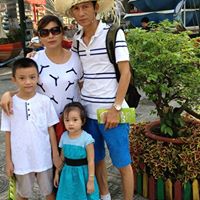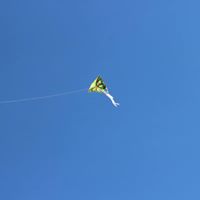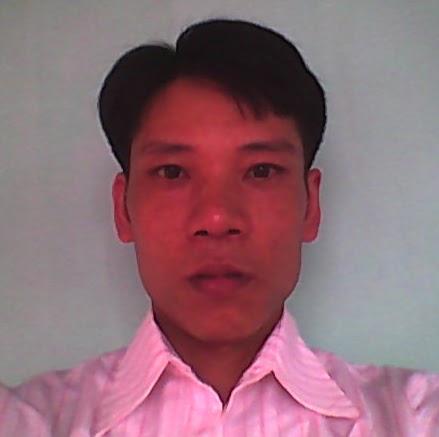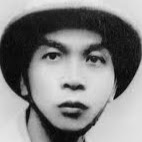Du Cat Nguyen
age ~56
from Kent, WA
- Also known as:
-
- Du C Nguyen
- Ducat C Nguyen
- Cat D Nguyen
- Duong Cat Nguyen
- Cat Nguyen Du
- Nguyen Cat Du
- Duong C Nguyen
- David Nguyen
- Catdu Nguyen
- Nguyen Cat Catdu
Du Nguyen Phones & Addresses
- Kent, WA
- Auburn, WA
- San Jose, CA
- El Cerrito, CA
- Lacey, WA
- Emeryville, CA
- Beaverton, OR
- Pleasanton, CA
- Seattle, WA
- Kerman, CA
- Douglas, WA
- Los Angeles, CA
Medicine Doctors

Du Nguyen
view sourceSpecialties:
General Surgery
Work:
Bassett Physician GroupBassett Medical Center General Surgery
1 Atwell Rd, Cooperstown, NY 13326
6075473373 (phone), 6075476553 (fax)
1 Atwell Rd, Cooperstown, NY 13326
6075473373 (phone), 6075476553 (fax)
Education:
Medical School
Tulane University School of Medicine
Graduated: 2014
Tulane University School of Medicine
Graduated: 2014
Languages:
English
Description:
Dr. Nguyen graduated from the Tulane University School of Medicine in 2014. He works in Cooperstown, NY and specializes in General Surgery. Dr. Nguyen is affiliated with Bassett Medical Center.
Us Patents
-
Automated Control Of Microfluidic Devices Based On Machine Learning
view source -
US Patent:20210302452, Sep 30, 2021
-
Filed:Jun 10, 2021
-
Appl. No.:17/344183
-
Inventors:- Livermore CA, US
Eric B. Duoss - Dublin CA, US
Du Nguyen - Fremont CA, US
William Smith - Oakland CA, US
Sachin Subhash Talathi - Pleasanton CA, US
Aaron Creighton Wilson - Livermore CA, US -
International Classification:G01N 35/00
G05B 13/02
G05D 7/06
B01L 3/00
G01N 15/14
G01N 15/00 -
Abstract:A system is provided to automatically monitor and control the operation of a microfluidic device using machine learning technology. The system receives images of a channel of a microfluidic device collected by a camera during operation of the microfluidic device. Upon receiving an image, the system applies a classifier to the image to classify the operation of the microfluidic device as normal, in which no adjustment to the operation is needed, or as abnormal, in which an adjustment to the operation is needed. When an image is classified as normal, the system may make no adjustment to the microfluidic device. If, however, an image is classified as abnormal, the system may output an indication that the operation is abnormal, output an indication of a needed adjustment, or control the microfluidic device to make the needed adjustment.
-
System And Method For Augmented Reality-Enabled Gift Cards Using An Artificial Intelligence-Based Product Database
view source -
US Patent:20210241362, Aug 5, 2021
-
Filed:Oct 16, 2020
-
Appl. No.:17/073245
-
Inventors:- San Rafael CA, US
Du NGUYEN - San Rafael CA, US -
International Classification:G06Q 30/06
G06T 7/70
G01S 19/01 -
Abstract:A system comprises a database configured to store product data associated with a plurality of retailers, retail locations, and augmented reality experiences related to the product data; at least one hardware processor coupled with the database; and more software modules that are configured to, when executed by the at least one hardware processor, receive a purchase of a gift card from a first user, wherein the purchase specifies a second user to receive the gift card, a retailer, retailer location(s), gift card value, and augmented reality experience, receive a personalized message for the second user, from the first user, to be associated with the gift card, send a notification to the second user with instructions for retrieving the gift card at the specified retail location, receive location information from the second user, verify the location information.
-
Three-Dimensional Printed Structural Siloxanes Having Controlled Drug Release
view source -
US Patent:20200315975, Oct 8, 2020
-
Filed:Apr 3, 2019
-
Appl. No.:16/374629
-
Inventors:- Livermore CA, US
Eric B. Duoss - Dublin CA, US
Jeremy Lenhardt - Tracy CA, US
Du Nguyen - Fremont CA, US
Thomas S. Wilson - San Leandro CA, US -
International Classification:A61K 9/50
C08L 83/04
A61K 9/48
C09D 11/102
C09D 11/03
B33Y 10/00
B33Y 70/00
B33Y 80/00
B29C 64/118 -
Abstract:According to one embodiment, a core-shell microsphere includes a polyorganosiloxane shell, and a core inside the shell, the core having a carrier and at least one component, where the at least one component is configured to be released post processing. In addition, an average diameter of the polyorganosiloxane shell is in a range of greater than about 1 micron to less than about 100 microns.
-
Hierarchical Triply Periodic Minimal Surface Structures As Heat Exchangers And Reactors
view source -
US Patent:20200215480, Jul 9, 2020
-
Filed:Jan 9, 2019
-
Appl. No.:16/243810
-
Inventors:- Livermore CA, US
Du NGUYEN - Fremont CA, US
Joshuah K. STOLAROFF - Oakland CA, US -
International Classification:B01D 53/22
B33Y 80/00
B33Y 10/00
B01D 71/02
B01D 71/70
B01D 67/00
B01D 53/02
B01J 20/28 -
Abstract:The present disclosure relates to a transport mechanism apparatus for transporting at least one of a gas or a fluid. The transport mechanism may have an inlet, an outlet and a triply periodic minimal surface (TPMS) structure. The TPMS structure is formed in a layer-by-layer three dimensional (3D) printing operation to include cells propagating in three dimensions, where the cells include wall portions having openings, and where the cells form a plurality of flow paths throughout the transport mechanism from the inlet to the outlet, and where the cells form the inlet and the outlet.
-
Three Dimensional Printed Gas Blown Polysiloxane Foams
view source -
US Patent:20200190345, Jun 18, 2020
-
Filed:Oct 21, 2019
-
Appl. No.:16/659025
-
Inventors:- Livermore CA, US
Eric B. Duoss - Dublin CA, US
Jeremy Lenhardt - Tracy CA, US
Du Nguyen - Fremont CA, US
Thomas S. Wilson - San Leandro CA, US
Alexandra Golobic - Pleasanton CA, US -
International Classification:C09D 11/102
C09D 11/037
B33Y 10/00
B33Y 70/00
B33Y 80/00
B33Y 40/00
B29C 64/314
B29C 64/106 -
Abstract:According to one aspect of an inventive concept, an ink formulation for forming a gas blown polysiloxane product includes a polysiloxane having at least one vinyl group, a silane crosslinker, a catalyst, a gas blowing agent, and a thixotropic agent. According to another aspect of an inventive concept, a product includes a three-dimensional printed polymer structure formed from at least one filament. The three-dimensional printed polymer structure has a plurality of layers arranged in a geometric pattern, the layers being formed from the at least one filament, where the at least one filament comprises a polysiloxane material having a plurality of closed cell pores formed therein.
-
Automated Control Of Microfluidic Devices Based On Machine Learning
view source -
US Patent:20190234976, Aug 1, 2019
-
Filed:Apr 5, 2019
-
Appl. No.:16/376380
-
Inventors:- Livermore CA, US
Eric B. Duoss - Dublin CA, US
Du Nguyen - Fremont CA, US
William Smith - Oakland CA, US
Sachin Subhash Talathi - Pleasanton CA, US
Aaron Creighton Wilson - Livermore CA, US -
International Classification:G01N 35/00
G05B 13/02
G05D 7/06
B01L 3/00
G01N 15/00 -
Abstract:A system is provided to automatically monitor and control the operation of a microfluidic device using machine learning technology. The system receives images of a channel of a microfluidic device collected by a camera during operation of the microfluidic device. Upon receiving an image, the system applies a classifier to the image to classify the operation of the microfluidic device as normal, in which no adjustment to the operation is needed, or as abnormal, in which an adjustment to the operation is needed. When an image is classified as normal, the system may make no adjustment to the microfluidic device. If, however, an image is classified as abnormal, the system may output an indication that the operation is abnormal, output an indication of a needed adjustment, or control the microfluidic device to make the needed adjustment.
-
Automated Control Of Microfluidic Devices Based On Machine Learning
view source -
US Patent:20180311663, Nov 1, 2018
-
Filed:Apr 26, 2017
-
Appl. No.:15/498282
-
Inventors:- Livermore CA, US
Eric Duoss - Dublin CA, US
Du Nguyen - Fremont CA, US
William Smith - Oakland CA, US
Sachin Subhash Talathi - Pleasanton CA, US
Aaron Creighton Wilson - Livermore CA, US -
International Classification:B01L 3/00
G05B 13/02
G05D 7/06
G01N 35/00 -
Abstract:A system is provided to automatically monitor and control the operation of a microfluidic device using machine learning technology. The system receives images of a channel of a microfluidic device collected by a camera during operation of the microfluidic device. Upon receiving an image, the system applies a classifier to the image to classify the operation of the microfluidic device as normal, in which no adjustment to the operation is needed, or as abnormal, in which an adjustment to the operation is needed. When an image is classified as normal, the system may make no adjustment to the microfluidic device. If, however, an image is classified as abnormal, the system may output an indication that the operation is abnormal, output an indication of a needed adjustment, or control the microfluidic device to make the needed adjustment.
Resumes

Du Nguyen
view sourceWork:
Mosaic Fertilizer 2000 - 2013
Chemist
Chemist

Du Nguyen
view source
Du Nguyen
view source
Du Nguyen
view source
Du Nguyen
view source
Du Nguyen
view sourceLocation:
United States

Du Nguyen
view sourceLocation:
United States

Du Nguyen
view sourceLocation:
United States
Education:
San Jose State University
B.S., Mechanical Engineering
B.S., Mechanical Engineering
Vehicle Records
-
Du Nguyen
view source -
Address:2127 Flintside Ct, San Jose, CA 95148
-
VIN:2HNYD28609H505325
-
Make:ACURA
-
Model:MDX
-
Year:2009
License Records
Du Thi Nguyen
Address:
Richmond, CA
License #:
5260826-1112 - Expired
Category:
Cosmetology
Issued Date:
Feb 3, 2003
Expiration Date:
Sep 30, 2007
Type:
Nail Technician
Du Ba Nguyen
License #:
1210000599
Category:
Nail Technician Temporary Permit
Du Mau Nguyen
License #:
1210001179
Category:
Nail Technician Temporary Permit
Du Mau Nguyen
License #:
1206004496
Category:
Nail Technician License
Du Thi Nguyen
License #:
1208002098
Category:
Nail Salon License
Du Ngoc Nguyen
License #:
86067 - Active
Category:
Nursing Support
Issued Date:
Jul 8, 2016
Effective Date:
Jul 8, 2016
Expiration Date:
Jul 8, 2018
Type:
Medication Aide
Du D Nguyen
License #:
26034 - Expired
Category:
Nursing Support
Issued Date:
Jul 8, 1994
Effective Date:
May 28, 1998
Type:
Nurse Aide
Isbn (Books And Publications)




Du Hong Nguyen
view source
Du Dua Nguyen
view source
Du Anh Nguyen
view source
Du Kim Nguyen
view source
Du Khanh Nguyen
view source
Du Nguyen
view source
Du Nguyen
view source
Du Nguyen
view sourceYoutube
Plaxo

Long Nguyen Hoang Du
view sourceHo Chi Minh CityFreelance
Classmates

du Nguyen
view sourceSchools:
Latona Elementary School Seattle WA 1980-1985, Hamilton Middle School Seattle WA 1986-1988
Community:
Bob Donley, Cynthia Engle, Edward Lynch

du Nguyen
view sourceSchools:
Jackson Junior High School Vienna WV 2000-2002
Community:
Andrea Florida, Allison Creech, Belinda Ward

Lasan Duc Minh High Schoo...
view sourceGraduates:
Tri du Nguyen Tri du (1971-1975)

Texas Academy of Math &am...
view sourceGraduates:
Rachel Beveridge (1997-2001),
Sami Gharahi (2000-2004),
Cherie Plouff (2001-2005),
Xuan Nguyen (1997-1999),
Du Nguyen (1997-1999)
Sami Gharahi (2000-2004),
Cherie Plouff (2001-2005),
Xuan Nguyen (1997-1999),
Du Nguyen (1997-1999)

College Jean of Brebeuf, ...
view sourceGraduates:
Vinh du Nguyen (1983-1987),
Daniel Brouillette (1981-1982),
Aur le (2003-2005),
Catherine Bourcier (1982-1986),
Isabelle Demers (1995-1999)
Daniel Brouillette (1981-1982),
Aur le (2003-2005),
Catherine Bourcier (1982-1986),
Isabelle Demers (1995-1999)

University of Washington ...
view sourceGraduates:
Thang Nguyen (1991-1995),
Robert Scott Gassler (1974-1976),
du Nguyen (1994-1997),
Ronald Boone Mill (1993-1997)
Robert Scott Gassler (1974-1976),
du Nguyen (1994-1997),
Ronald Boone Mill (1993-1997)

Hamilton Middle School, S...
view sourceGraduates:
Nikki McDonell (1993-1994),
Loretta Miller (1963-1966),
Loc Nguyen (1999-2003),
Derrick Hall (1990-1991),
du Nguyen (1986-1988)
Loretta Miller (1963-1966),
Loc Nguyen (1999-2003),
Derrick Hall (1990-1991),
du Nguyen (1986-1988)
Myspace
Flickr
Googleplus

Du Nguyen
Work:
Môi trường Nông Lâm (2010)
Vnxanh (2006-2010)
Vnxanh (2006-2010)
Education:
ĐH Nông Lâm - Công nghệ Môi trường, Tăng Bạt Hổ, Hoài Tân

Du Nguyen
Work:
Dartfish - Video Editor (2011-2011)
Education:
University of Utah, Utah Vallay University, Juan Diego CHS
Tagline:
You. Win.

Du Nguyen
Work:
Moonview Hotel - Reception (8)
Tagline:
"sống là chiến đấu"

Du Nguyen
Work:
Ct cpxd cau gianh
Education:
Cdxd nam dinh - Xd dd cn

Du Nguyen
Education:
An giang avc

Du Nguyen
Work:
TP HCM

Du Nguyen
Education:
University of Texas at Arlington

Du Nguyen
Work:
Cong ty TNHH Hoang an
Get Report for Du Cat Nguyen from Kent, WA, age ~56
















